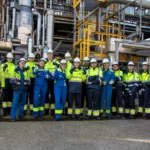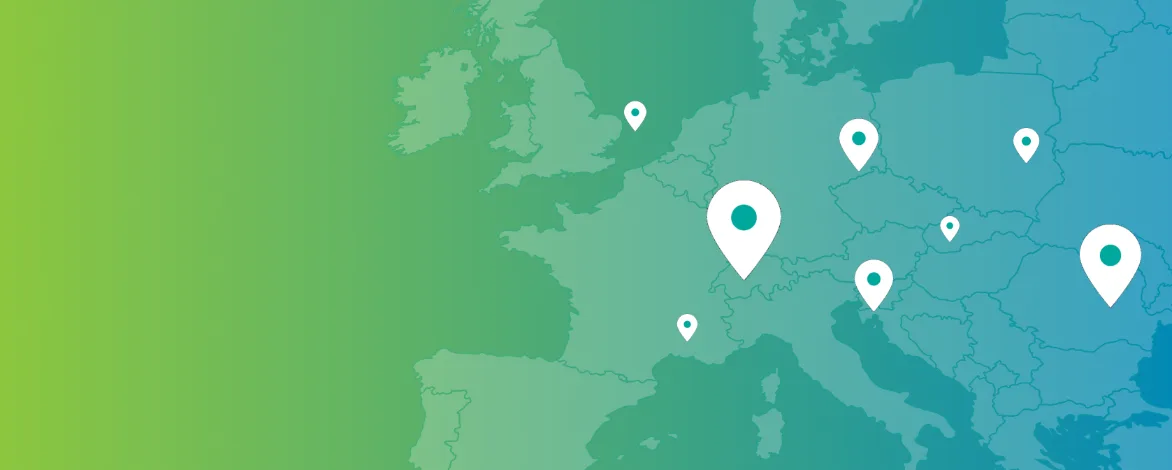Chemical industry snapshot
Ireland’s leading exporter
Chemicals, referred to here as the biopharmachem sector, plays a pivotal role in the Irish economy. It accounts for over 60% of goods exported from the country. It employs more than 42,000 people, and supports a further 42,000 indirect jobs. More than half our workforce are university graduates.
Dominated by pharmaceuticals
Installed base and existing track record.
- The BioPharmaChem cluster in Ireland is constantly evolving and is now perfectly equipped to advance our position as a global leader with more than 90+ companies. We’ve developed a proven track record for next level product development, our resilient supply chains, our connections to strategic markets, and our ambitions for the future. The sector in Ireland includes traditional API and finished product along with Biotech and newly emerging advanced therapeutics such as cell & gene therapy. New subsectors include a sophisticated Global Business Services offering and a growing CDMO cluster. Our indigenous ecosystem is growing with ambitions to become a large player in our sector.
- Ireland has a vibrant CDMO sector, especially in API manufacture. Looking to the future, capable of offering a consolidated supply chain thus de-risking from pandemic shock, geopolitical risk, and sanctions.
- Ireland has an exemplary compliance record with regulatory agencies like the FDA and EMA, who collaborate and work closely with our Health Products Regulatory Authority (HPRA) to achieve trouble-free compliance.
- The sector has an exemplary culture of compliance.
Strong leadership
- Ireland’s life sciences sector has a global reputation for operational and innovational excellence. The sector continues to evolve, expanding its capabilities to include innovation, digitalisation, and next-generation technologies.
- Ireland’s industry can avail of skilled talent in existing pharma sites, experienced in quality assurance, quality control, product development, science, and engineering. There’s also unrestricted access to the EU labour pool of over 240 million people.
- We’ve strong links with universities which provides local talent matched to industry needs.
- Fast-track support for employment permits for skilled international labour has proven to be a competitive advantage.
Culture of collaboration and established ecosystem
- Ireland’s ‘can do’ attitude, highly “adaptable” approach, and willingness to collaborate helps create solutions and solve problems. Multinational companies operating in Ireland have myriad opportunities to collaborate with domestic companies, a network of life sciences sub-supply providers and multiple industry-focused research centres spanning a variety of technologies. This is strengthened by industry’s ability to influence national policy and mobilise around an agenda.
- Active industry-academic partnership in technology, materials, manufacturing and more
- Growing indigenous base
A supportive political, industrial environment and geographical location
- Uniquely positioned to directly supply North America, Europe, the Middle East, and Africa daily with onward connections to Asia, Australia, and Latin America, we also have ease of access to Europe and the United Kingdom via Northern Ireland. And, as a small island with rich renewable resources including tidal and wind power, our manufacturing can be positioned as clean with minimal environmental impact.
A platform for global companies
Ten of the top 10 global pharmaceutical companies, many US-based, are located in Ireland. It is the second largest net exporter of complex pharmaceuticals in the EU.
Clustered around Cork and Dublin
Ireland is small and can be viewed as a single industrial policy region. There is a cluster of API plants around Cork – mostly engaged in high- end chemical synthesis. Dublin has a more diverse industry base including chemical synthesis, drug product formulation and biotechnology based manufacture – including fermentation, purification and formulation. Recent investments will make Dublin a leading global cluster for biologics (biopharmaceutical) manufacture. There are emerging clusters in the midlands and also in the South East of the country.
An international export platform
Ireland’s chemical and pharmaceutical industry exported €106 billion of products in 2020, 60% of the country’s exports.
The sector pays more than €2 billion of corporation tax each year.
A four-fold rise in jobs, with more to come
Employment in the sector grew from 5,200 in 1988 to 42,000 in 2022, supporting as many again providing services to the sector. Companies invested about €123 billion in capital projects during 2010-2022, creating more than 3,000 new jobs. Replacement value of the sector is estimated at €45 billion.
Reshoring of APIs and intermediates into the EU will present an opportunity for the European and Irish API sectors.
How are we doing?
Strengths
- Excellent levels of regulatory compliance (EHS/Quality), reducing manufacturing risk or risk of supply interruptions
- Depth of compliance experience
- Record of continual improvement helps companies bring product to market on time
- Very positive national perceptions of the industry
- Ranked seventh worldwide for competitiveness
- Recognised Global hub for biopharmaceutical manufacture
- Second largest manufacturer of pharmaceutical ingredient and medic
- A well-qualified workforce that has achieved critical mass
- A large and growing research skill base which will significantly assist the attraction and retention of high tech FDI now significantly increasing indigenous innovation
- 440 world class principal investor (PI)-led research teams
- 2 000 PhD graduates in total at an ongoing average rate of approximately 400
- 1 000 post-doctoral research training places
Challenges
- Cost base high – including labour and energy costs
- Dependent on inwards investment
- Responding to patent cliff issues
- Pressure on cost of healthcare
Our contribution to a competitive Europe
The key policy driver nationally is the development of the national research base in order to harness and anchor innovation in the country. This led to the establishment of Science Foundation Ireland (SFI), which funds basic and applied research. The Programme for Research in Third Level Research Institutes (PRTLI) has invested in state-of-the- art research infrastructure.
Specific industry initiatives
Lighthouse Project – Factory 5.0
BPCI is working an industry consortium comprising API chemical companies and technology companies to incorporate the principles of Digitisation and Sustainability into the sector via the principles of Factory 5.0.
SSPC-2 – a centre specializing in reach into solid state chemistry and wet synthesis has been established. This €35 million research centre is part funded by Government (SFI), the industry and the university sector. It is an excellent example of industry-academic-Government collaboration. It will concentrate on near- to- industry research and innovation.
PMTC – The Pharmaceutical Manufacturing Technology Centre – funded by government through Enterprise Ireland will fund applied research conducted by the research community for industry.
NIBRT – The National Institute for Bioprocessing Research and Training – will support innovation in the biotech sector – part funded by industry and Government. A state-of-the-art facility.
CRANN – Research institute established by government specialising in nanotechnology.
Cell and Gene Therapy – Cell and Gene Therapy (CGT) supply and manufacture has been identified as an opportunity for the sector in Ireland. Investment in that infrastructure is planned.
Research Policy
The pharmachem sector as demonstrated above is not only “high value” in terms of its expenditure on the Irish economy in terms of salaries but is also a major participant in private sector research and development. Just over 80% of pharma and chemical firms engaged in R&D in 2011, behind only medical device firms. This is well ahead of other manufacturing sectors including electrical equipment and computers. In this sense the pharma sector is not only a major manufacturing industry but also a very high value manufacturing industry, as R&D jobs tend to be of a better quality than more basic manufacturing.














